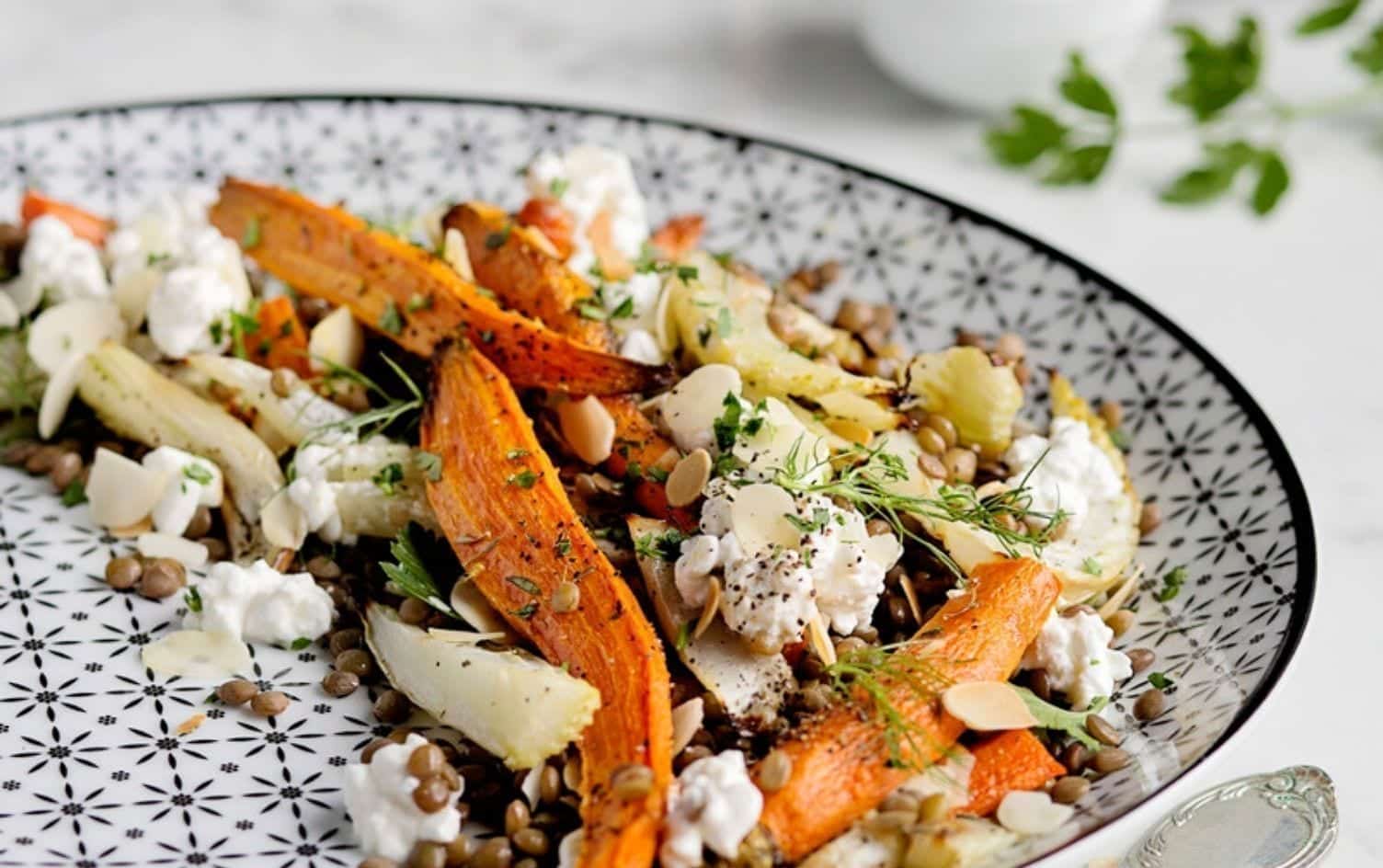If you’re following a low-carb diet, it’s not just the number of grams of carbohydrates that counts. For the healthiest diet, you’re going to have to pay attention to where those carbs are coming from. “The quality of the carbohydrates you eat is vital for overall health,” says Vicki Shanta Retelny, RD. These include whole grains, beans, lentils, vegetables and fruits, which all contain a variety of vitamins, minerals and fiber, she says.
Depending on what type of low-carb diet you’re on (e.g., Atkins, South Beach, keto), you’ll have varying amounts of carbs available to you each day. In turn, that influences what sources you consume. For instance, beans are too carb-rich to fit on very low-carb diets, like keto, while non-starchy veggies will likely be a better fit.
Regardless of which eating style you follow, there are ways to maximize nutrition while hitting your macros on a low-carb diet:
FOCUS ON FIBER
Only one in 10 people is eating enough fiber, says Retelny. Fiber is a nutrient that helps “keep cholesterol, blood sugar and blood pressure levels in a healthy range.” It’s even harder to meet your fiber goals if you’re consciously limiting carbohydrates. While it may be tempting to save carbs to “spend” on your favorite cookies, chips or other processed foods, these will not help you feel your best. “They cause spikes in blood sugar and insulin levels, provide minimal nutritional value and are high in calories, which can cause weight gain in the long run,” she says. On the other hand, focusing on fiber-rich carbs (e.g., avocado, raspberries, artichokes, broccoli and Brussels sprouts) naturally improves diet quality to provide “more stable blood sugar, consistent energy levels and enhanced mental and physical performance,” adds Retelny. A good rule of thumb is to aim for 8–10 grams of fiber with each meal, which you can track with an app like MyFitnessPal.
COUNT “NET CARBS” – AND CHOOSE THOSE FOODS WISELY
If you have a tight carb goal or range you’re looking to stay in, you might’ve thought to yourself: this is impossible. That’s why the concept of “net carbs” can be your friend. To calculate net carbs, “take the grams of total carbs and subtract the grams of fiber and sugar alcohols,” explains Retelny. (If the sugar alcohols are over 5 grams, you subtract half.) Fiber and sugar alcohols are the parts of the food that are undigested, which is why they seemingly get a free pass. This is just another reason to eat high-fiber carbs (snacking on nuts instead of chips, for instance), since “the net carbs go down as the fiber goes up,” says Retelny.
That said, you’ll want to stick to whole foods as much as possible. There are many high-fiber or sugar-free packaged foods that advertise low net carbs on the label. These bars, snack foods, or desserts might not add a lot of carbs to your diet, but they’re also largely devoid of nutrients. “Eating vegetables, fruits and whole grains with natural fiber is the best option,” says Retelny.
EAT SMALLER PORTIONS OF STARCHY FOODS
You don’t have to completely shun sweet potatoes, beans or whole-wheat pasta (which can all be healthy foods for weight loss). Yes, they do have more carbohydrates compared to non-starchy sources. A cup (150g) of black beans, for example, has 23.1 grams of net carbs, an amount that may meet your entire carb limit on a keto diet (which typically targets 20–50 grams of carbs a day). However, you can still include them if you limit portion sizes. “I advise measuring starchy foods and having them as a side or a ‘satellite’ to your main dish,” says Retelny. By minimizing portion sizes instead of completely eliminating these foods from your diet, it makes sticking with low-carb more sustainable and enjoyable.
FILL YOUR PLATE WITH NON-STARCHY VEGGIES
“Non-starchy veggies are low-calorie nutritional powerhouses and naturally low-carb,” says Retelny. Veggies like leafy greens, bok choy, spinach, broccoli, bell peppers, mushrooms, zucchini, snap peas, celery, cherry tomatoes and onions should make up half of your plate, she says. Depending on how low your low-carb diet is, you may have to count these carefully and be strategic with which ones you focus on. For example, 3 cups (90g) of romaine lettuce has 0.7 grams of net carbs, 1 cup (150g) of broccoli has 3.6 grams of net carbs and 1 cup (150g) of zucchini has 2.6 grams of net carbs.
REACH FOR FRUITS WISELY
Completely removing fruit from your diet because you’re low-carb isn’t necessary. In fact, fruit is nature’s candy, so take advantage of that. “Fruits are high-quality carbohydrates with a lot of nutritional value and good fiber content, too,” says Retelny, “There’s no replacing the antioxidants, vitamins, minerals and fiber, such as pectin, in fruits.” Avoid those that are high in sugar, like dried fruit, grapes and overripe fruits (like brownish bananas), and go for lower-sugar options like berries, she says.
Build healthy habits with the Low Carb Meal Plan. Sign up to receive daily tips and registered dietitian-approved recipes tailored to your personal calorie and carb goals. Go to “Plans” in the MyFitnessPal app to try our 28-day Low Carb Meal Plan.




